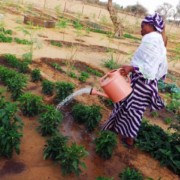Speeches Shim

The vast majority of Nigeriens rely on subsistence agriculture and the region’s frequent droughts lead to poor harvests and regular food shortages. Chronic food insecurity and infectious disease have resulted in some of the highest rates of malnutrition and mortality in the world. As of January 2015, United Nations estimates placed Niger’s food-insecure population at nearly 3.4 million people.

Niger experiences low and variable rainfalls, land degradation, deforestation and desertification. The vast majority of Nigerians depend on agriculture for their livelihoods, and frequent droughts in the region often damage crop yields, leading to food shortages in the country. Chronic food insecurity and a high prevalence of infectious diseases have led Niger to record some of the highest malnutrition and mortality rates in the world. According to United Nations estimates, nearly 3.4 million Nigeriens are chronically food insecure.


Comment
Make a general inquiry or suggest an improvement.